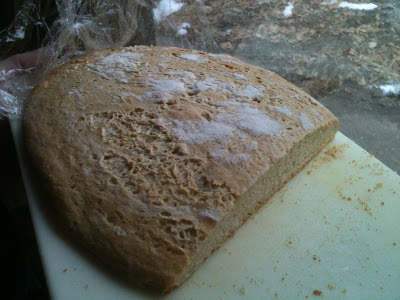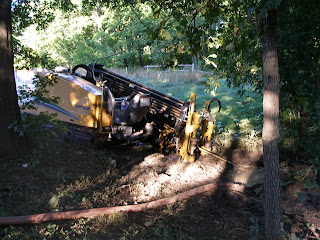Permaculture Takes Root
Permaculture Takes Root
Reprinted with permission from the Prior Lake American.
Permaculture takes root
Documentary to feature home that uses 'green' growing techniques
by Joanna Miller
staff writer
Daniel Halsey of Spring Lake Township,
with his cat, Captain, plans to start a
Permaculture club for area residents.
Care for the earth. Care for people. Share the surplus.
That is the message that impressed local photographer Daniel Halsey when he began to learn about Permaculture, a movement for eco-friendly sustainable living. Its name is derived from the words "permanent" and "culture."
"It changes the mindset from being a consumer to a producer," Halsey said. "It's interesting, and it's progressive." Because of this, Halsey joined the Permaculture Collaborative, a Minnesota organization founded in 2003 as a learning community. Now, Halsey's Spring Lake Township home and acreage has become a site to implement this ecological lifestyle.
The hybrid car outside his garage is just one hint that the home and the acreage around it is "green." Halsey's residence will be featured in the organization's upcoming summit in June, when world-renowned Permaculture expert Geoff Lawton visits Minnesota. The scientist, of the Permaculture Research Institute, Australia, will stay at Halsey's home beginning June 18 for a week of educational meetings and work to develop scientific practices on the property.
The meetings and project have thrust Halsey and his acreage into the spotlight as a topic of a St. Paul-based documentary in the making. He also plans to launch a south-of-the-river branch of the Collaborative, which at present consists of about 75 members mostly from the Twin Cities, and to gather them at the home for seminars. "Most of the members are from urban areas. I very much want to start a group out here of people doing this work. It's a neat lifestyle," he said.
Starting with areas closest to his home, Halsey has broken the property into zones for improvements. It will take four to five years to turn the property into a self-sustaining system. Zone one, the area nearest to the house, includes building a vegetable and fruit garden and installing a berm to block wind from Highway 13. He also will develop a swale system down the contours of a hill to provide adequate irrigation to trees, and direct excess runoff into a pond. The swales, or shallow depressions, capture rainfall and hold it in place so it can absorb into the ground. When swales are dry, they can be used to move a cart between orchard trees, he said.
Collecting natural rainfall is just one example of how Permaculture improves on a natural system, he added. Mounds above the swales made of dirt and compost enrich soil with nutrients for the plants or trees. By just fertilizing and watering plants in a yard, "You're really not building any equity in the ground," Halsey explained.
Neat little rows
During a collaborative work-share day
in Welch, Permaculture designers and
members worked on a zone one project
that included building perennial and
annual gardens with herbs, berries,
vegetables and beans. Zone one
landscaping near a home is the first
stage of land improvements.
For gardeners who hoe rows and plant seeds 3 to 4 inches apart – hold onto your hats. The "three sisters" Permaculture system places complimentary plants into groupings. Corn, beans and squash planted in the same spot, for example, help each other out. The corn grows, the beans climb up the stalks, and the squash beneath the ground produces nitrogen to pump up the corn. The same can be said of tree/shrub/plant groupings that work as a team for pollination and nitrogen augmentation.
"The benefit is you can probably multiply the yield of your garden many times, and maybe put in half of the work," Halsey said. "It changes your mindset of what traditional gardening is." Because the plants feed off each other and work together, the land isn't depleted, he said. "You won't have these neat rows, but your garden turns into a rain forest of vegetables," he explained.
But before heading to the garden to plant, Halsey harvested research from county data banks. He gathered maps from Scott County's web site (www.co.scott.mn.us) that show an aerial view of the land, a contour map and a soil-type map. When these maps are used in conjunction with a sundial map he developed, it gives him a pretty good idea of the microclimates of the land. That way, he knows what types of plants will thrive in specific spots – and which spots will have longer growing seasons.
"One of the first rules of Permaculture is to observe," he said. While changes to the land are the most visible, Halsey says he’s made internal changes, too. "You learn a different way of viewing the world and how you can make a difference," he said. "It's not only about outside the house. You start from the inside."
Joanna Miller can be reached at (952) 345-6375 or jmiller@swpub.com.


Comments